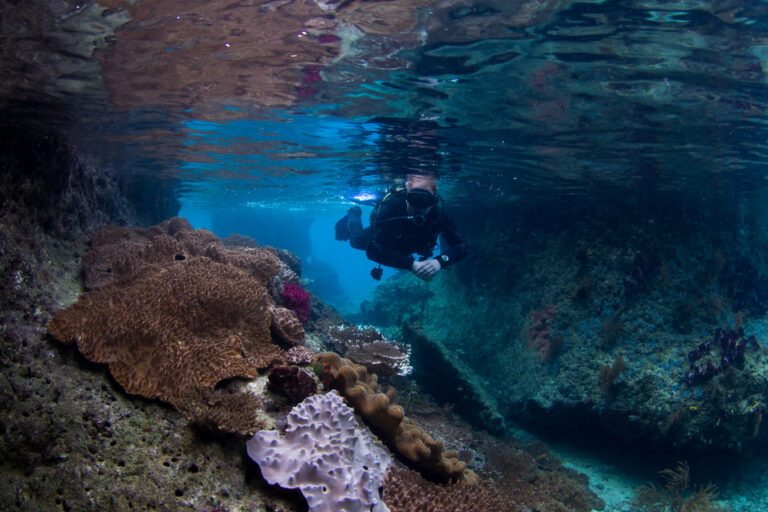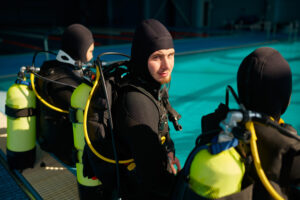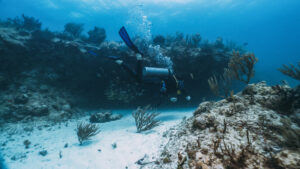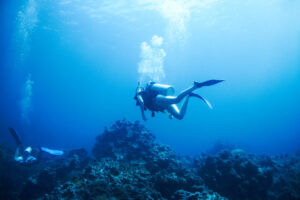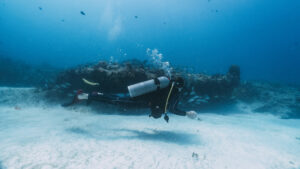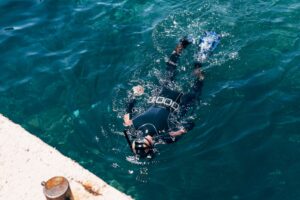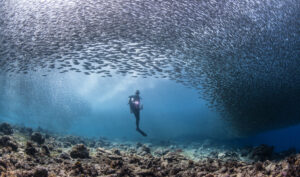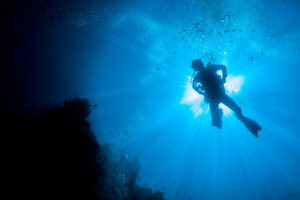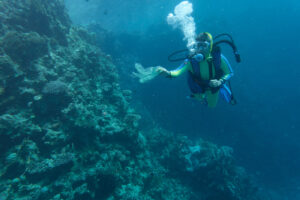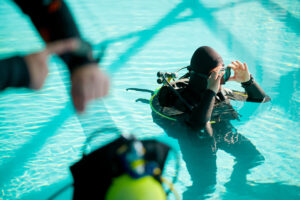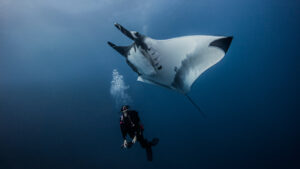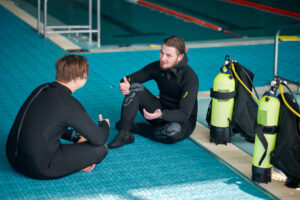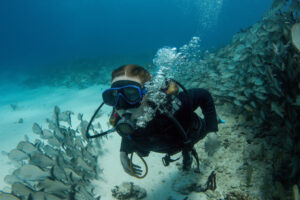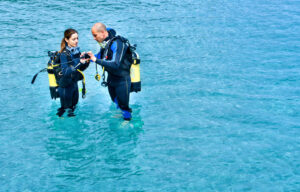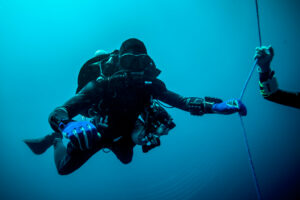What is a Safety Sausage?
The Safety Sausage, colloquially named for its elongated, tubular shape and vivid coloration, is a crucial tool in a diver’s arsenal. Officially known as a Surface Marker Buoy (SMB), it functions as a critical signaling device between divers and surface personnel, ensuring safety and communication in the vast and often unpredictable underwater realm.
Design and Construction
Safety Sausages are typically crafted from durable, high-visibility materials such as nylon or PVC, ensuring they withstand underwater pressures and currents, while remaining conspicuous against the surface backdrop. Their dimensions vary, but standard SMBs measure approximately 1 to 2 meters in length, inflated, with widths around 15 to 20 centimeters.
The upper section often incorporates a reflective or fluorescent strip to enhance visibility, particularly in low light or poor weather conditions. The lower end generally includes a weighted base for stability, and a mechanism for inflation, which can be either oral, via the diver’s breath, or direct, through a low-pressure inflator hose from the diver’s BCD (Buoyancy Control Device).
Usage
The Safety Sausage serves several vital roles in scuba diving operations. Its primary function is to indicate the diver’s location to surface personnel or vessels. This is especially useful in conditions of high seas, poor visibility, or when the diver is surfacing a significant distance from the dive boat.
Besides marking a diver’s position, SMBs can also serve as a visual reference for safety stops, aiding in controlled ascents. Further, they can signal distress if deployed unusually, such as fully inflated on the seabed. Some divers also use SMBs for drift diving, letting the current carry them along while the buoy on the surface shows their location.
Safety Considerations
Despite its simplicity, the use of a Safety Sausage requires proper training. Incorrect deployment can lead to dangerous situations such as rapid ascents, entanglement, or dragging the diver in strong currents. It’s crucial to maintain control of the SMB throughout inflation and ascent, ensuring it doesn’t ‘run away’ and cause an uncontrolled rise to the surface, risking decompression sickness.
Variations
There are two primary types of SMBs: the delayed (or deployable) SMB and the permanently inflated SMB. The delayed SMB is inflated at depth and sent to the surface, typically towards the end of a dive or during a safety stop. The permanently inflated SMB, often used in drift diving, is inflated at the beginning of the dive and towed along.
Historical Development
The Safety Sausage’s evolution mirrors the broader development of scuba diving as a popular recreational activity. In the early days of diving, divers relied on large, cumbersome, permanently inflated marker buoys, often attached to the boat, to mark their location. As equipment improved and divers began exploring further from their launch points, the need for a portable, deployable marker became apparent.
In the mid-20th century, the Safety Sausage, as we know it today, emerged. Compact, durable, and easily deployable, it quickly became a staple of the divers’ kit. Over the years, incremental improvements in materials and design have made the SMB lighter, more robust, and more visible.
Choosing the Right SMB
Choosing the right Safety Sausage depends on the type of diving being undertaken. For recreational divers, a simple, brightly colored, one-meter SMB is often sufficient. Technical divers, however, might prefer a larger, more robust SMB with additional features like a double-ended hook, pressure relief valve, or an integrated pouch for compact storage.
The choice between a delayed SMB and a permanently inflated SMB depends on the dive conditions. Drift diving or diving in areas with boat traffic usually calls for a permanently inflated SMB. In contrast, a delayed SMB is often more suitable for wall dives, wreck dives, or dives in less trafficked areas, where it can be deployed towards the end of the dive.
Maintenance
The Safety Sausage, while robust, requires regular maintenance to ensure its longevity and effectiveness. After each dive, it should be rinsed with fresh water to remove salt, sand, and other potential abrasives. Periodically, divers should inspect their SMBs for damage or wear, checking seams, the inflation mechanism, and the overall material integrity. Any sign of damage should be addressed immediately, and if necessary, the SMB should be replaced.
Future Developments
Like all diving equipment, the Safety Sausage continues to evolve. Future developments may include integrated GPS tracking, automatic distress signals, or advanced materials that increase visibility or durability. Whatever the future holds, the SMB will undoubtedly remain a vital part of the diver’s safety toolkit.
The Importance of Training
Finally, it’s worth repeating the importance of proper training in the use of SMBs. Many diving certification bodies, such as PADI, NAUI, and BSAC, offer specific training in SMB deployment and use. These courses are highly recommended for all divers, regardless of their experience level. After all, the Safety Sausage is only as effective as the diver deploying it.
The Safety Sausage, or Surface Marker Buoy, is a vital safety tool in scuba diving. Its bright, easily visible design ensures that divers can effectively signal their position to surface observers, providing a critical lifeline in the vast, blue expanse of the ocean. As with all diving equipment, proper training and usage are essential to ensure the Safety Sausage serves its purpose without introducing additional risks. Divers should be well versed in the handling, deployment, and retrieval of their SMBs to fully benefit from this simple, yet indispensable, device.

